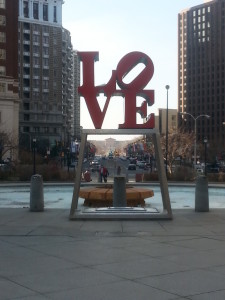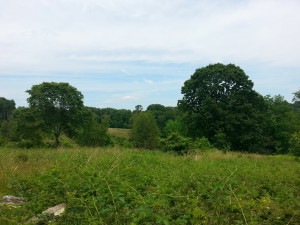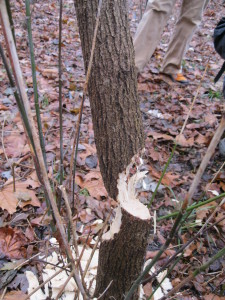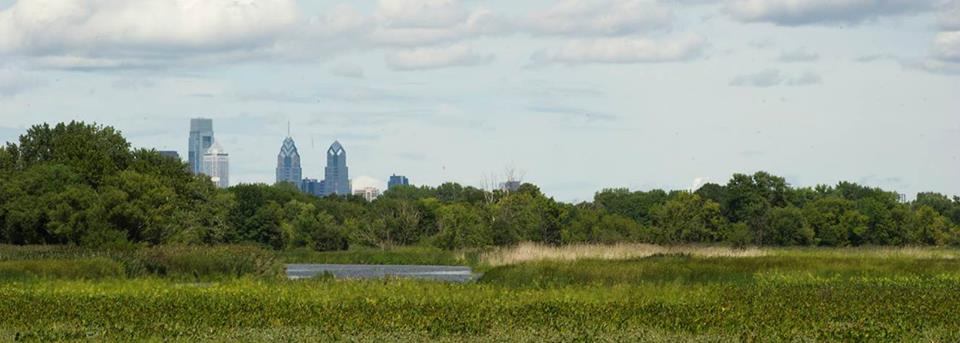By guest contributor Rhyan Grech, Audubon PA
Are humans a part of nature? This important question spans generations, geographic locations, fields of study, vocations, religions, political parties and the city of Philadelphia. Working to protect wildlife and their habitats in the fifth most populated metropolitan area in the country may sound like a one-step-forward-two-steps-back sort of process, but it’s exactly what Audubon Pennsylvania and many other organizations are doing. And illustrating the relevance of our work to every city resident is a challenge we all share.
 Looking around Philly, nature can easily slip to the back of one’s mind. Bustling crowds, honking traffic, stunning murals, towering skyscrapers, delicious restaurant smells, bright shops and a fantastic music scene are enough to keep anyone distracted and entertained walking around the city on any given day. Often our reminders of “nature” consist of precipitation and the wind tunnels created between buildings, which serve to inconvenience and/or knock over the casual pedestrian. But to Philadelphia, as with any urban area, there is more than meets the eye.
Looking around Philly, nature can easily slip to the back of one’s mind. Bustling crowds, honking traffic, stunning murals, towering skyscrapers, delicious restaurant smells, bright shops and a fantastic music scene are enough to keep anyone distracted and entertained walking around the city on any given day. Often our reminders of “nature” consist of precipitation and the wind tunnels created between buildings, which serve to inconvenience and/or knock over the casual pedestrian. But to Philadelphia, as with any urban area, there is more than meets the eye.
 Let’s take an obvious example: the Fairmount Park system consists of more than 9,200 acres of hills, forests and meadows within city limits. Even a seasoned hiker or mountain biker can work up a sweat through miles of solitude on the trails. The park has been designated by Audubon as an Important Bird Area, both for resident bird populations and as stop-over habitat for migrants, providing a crucial place to rest and refuel on their bi-annual journey. But many human Philly residents, even those in adjacent neighborhoods, never set foot into Fairmount Park. Is it viewed as territory too intimidating and unfamiliar to approach? Is it thought superfluous, a luxury? Or does it never even enter the mind of the average city resident, because it is considered separate from providing for oneself and one’s family, and day-to-day life?
Let’s take an obvious example: the Fairmount Park system consists of more than 9,200 acres of hills, forests and meadows within city limits. Even a seasoned hiker or mountain biker can work up a sweat through miles of solitude on the trails. The park has been designated by Audubon as an Important Bird Area, both for resident bird populations and as stop-over habitat for migrants, providing a crucial place to rest and refuel on their bi-annual journey. But many human Philly residents, even those in adjacent neighborhoods, never set foot into Fairmount Park. Is it viewed as territory too intimidating and unfamiliar to approach? Is it thought superfluous, a luxury? Or does it never even enter the mind of the average city resident, because it is considered separate from providing for oneself and one’s family, and day-to-day life?
 Look next to the Tookany/Tacony-Frankford waterway, a creek that claims three different names depending on exactly where you’re looking. Certain sections of the creek are highly impacted, feeling pressure from development of impervious surfaces on all sides (literally, in some places, where the creek flows through culverts). Yet Tacony Creek Park, just north of Roosevelt Blvd, is home to a population of beaver. Yes, beaver. Deer, coyotes and peregrine falcons are other species that not only survive in our hometown, but thrive. These and countless other plants and animals live where we live, and few would argue that they are not part of nature. Humans, like falcons, get tossed around by the wind from time to time. Like beaver, we use trees and other natural resources to build our homes and provide for our needs. And like coyotes, we sometimes have to be clever and scrappy to get by.
Look next to the Tookany/Tacony-Frankford waterway, a creek that claims three different names depending on exactly where you’re looking. Certain sections of the creek are highly impacted, feeling pressure from development of impervious surfaces on all sides (literally, in some places, where the creek flows through culverts). Yet Tacony Creek Park, just north of Roosevelt Blvd, is home to a population of beaver. Yes, beaver. Deer, coyotes and peregrine falcons are other species that not only survive in our hometown, but thrive. These and countless other plants and animals live where we live, and few would argue that they are not part of nature. Humans, like falcons, get tossed around by the wind from time to time. Like beaver, we use trees and other natural resources to build our homes and provide for our needs. And like coyotes, we sometimes have to be clever and scrappy to get by.
We live in the same place, use the same resources, are affected by the same factors, and face the same challenges as these animals. Humans have a leg up in some ways, to be sure. Medical, technological and transportation advances differentiate our life styles in many ways from other species. But while we are biologically able to survive without smartphones or Septa, we cannot survive without water, air and the plants and animals we eat. The availability of these resources affect us in the most basic way, and our actions, in turn, affect them. These effects, this interconnectedness, can be considered the definition of “nature.” The greatest challenge for those of us in the environmental field is illustrated when asking my initial question: are humans part of nature? Our success will be measured, and the future of our planet secured, when the answer is a collective and definitive yes!
Tinicum Marsh at John Heinz National Wildlife Refuge and Philadelphia Skyline Photo credit: Lamar Gore
About the author:
Rhyan Grech is a Project Coordinator with Pennsylvania Audubon. She focuses on bird and pollinator habitat conservation and enhancement, community engagement and education in schools around Philadelphia. Find out more at www.facebook.com/AudubonPAPhilly.


Pingback: Natural Philadelphia: Where Do We Fit In? | TTF Watershed